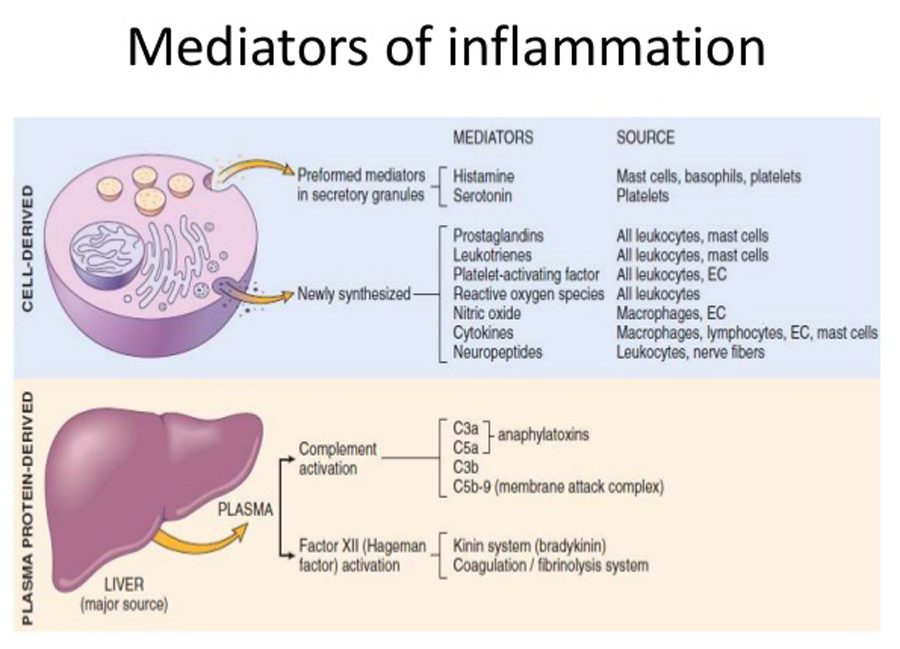Effects of Spinal Manipulative Therapy on Inflammatory Mediators in Patients with Non-specific Low Back Pain: A Non-randomized Controlled Clinical Trial
SOURCE: Chiropractic & Manual Therapies 2021 (Jan 8)
Julita A. Teodorczyk-Injeyan, John J. Triano, Robert Gringmuth, Christopher DeGraauw, Adrian Chow & H. Stephen
Graduate Education and Research Programs,
Canadian Memorial Chiropractic College,
Toronto, Ontario, Canada
Background: The inflammatory profiles of patients with acute and chronic nonspecific low back pain (LBP) patients are distinct. Spinal manipulative therapy (SMT) has been shown to modulate the production of nociceptive chemokines differently in these patient cohorts. The present study further investigates the effect(s) of SMT on other inflammatory mediators in the same LBP patient cohorts.
Methods: Acute (n = 22) and chronic (n = 25) LBP patients with minimum pain scores of 3 on a 10-point numeric scale, and asymptomatic controls (n = 24) were recruited according to stringent exclusion criteria. Blood samples were obtained at baseline and after 2 weeks during which patients received 6 SMTs in the lumbar or lumbosacral region. The in vitro production of tumor necrosis factor (TNFα), interleukin-1 β (IL-1β), IL-6, IL-2, interferon γ (IFNγ), IL-1 receptor antagonist (IL-1RA), TNF soluble receptor type 2 (sTNFR2) and IL-10 was determined by specific immunoassays. Parametric as well as non-parametric statistics (PAST 3.18 beta software) was used to determine significance of differences between and within study groups prior and post-SMT. Effect size (ES) estimates were obtained using Cohen’s d.
There are more articles like this @ our:
Results: Compared with asymptomatic controls, SMT-related change scores were significant (P = 0.03–0.01) in reducing the production levels of TNFα in both patient cohorts and those of IL-6, IFNγ and sTNFR2 (P = 0.001–0.02) in patients with chronic LBP. Above-moderate to large ES (d > 0.6–1.4) was observed for these mediators. Compared with respective baselines, a significant post-SMT reduction (P = 0.01) of IL-6 production was detected only in patients with chronic LBP while a significant increase of IL-2 production (P = 0.001 vs. control, and P = 0.004 vs. chronic LBP group) and a large ES (d = 0.87) were observed in patients with acute LBP. Pain and disability scores declined significantly (P < 0.001) in all LBP patients, and were positively correlated (P = 0.03) with IFNγ and IL-2 levels in the acute LBP cohort.
Conclusion: The short course of SMT treatments of non-specific LBP patients resulted in significant albeit limited and diverse alterations in the production of several of the mediators investigated in this study. This exploratory study highlights the potential of SMT to modulate the production of inflammatory components in acute and chronic non-specific LBP patients and suggests a need for further, randomized controlled clinical trials in this area.
Trial registration: This study was prospectively registered April 2012 with Clinical Trials.gov NCT01766141
Keywords: Cytokine; Inflammatory mediators; Low back pain; Spinal manipulation.
From the FULL TEXT Article:
Background
The use of spinal manipulative therapy (SMT) has been recognized as an effective form of non-pharmacological treatment of non-specific low back pain (LBP). [1–3] Biomechanical and neurophysiological consequences of SMT have been explored in several studies. [4–8] However, there continues to be a need to examine the cellular and molecular mechanisms of SMT-related effects with a view of enriching the basic science background for further studies in the clinical arena.
Non-specific LBP is the most common form of LBP. The prevalence, etiological factors that may be contributing to its development, and the effectiveness of different modalities for treatment, have been widely discussed and documented. [1, 9, 10]
Elevated systemic levels of classical inflammatory mediators such as C-reactive protein, and cytokines including tumor necrosis factor α (TNFα), interleukin 1 (IL-1) and IL-6 have been reported in patients with LBP [11–14] suggesting that spinal pain may encompass inflammatory components. A recent systematic review presented an overview of pro-inflammatory markers in LBP. [15] In the context of SMT several studies have explored its effects on inflammatory aspects of the immune response in asymptomatic subjects. [16, 17] However, studies investigating the relationship between SMT and inflammatory parameters in LBP patients have been limited. To our knowledge, only one study has explored the relationship between SMT and the production of nociceptive/chemotactic cytokines in acute and chronic low back patients utilizing an in vitro model. [18]
Pain scores in SMT-treated patients with acute and chronic LBP were associated with a significant reduction of the nociceptive chemokine, macrophage inflammatory protein 1α (CC chemokine ligand, CCL3) levels. On the other hand, SMT-related attenuation of the production of macrophage inflammatory protein-1β, CCL4, was apparent only in patients with acute LBP. [18] Indeed, further studies have demonstrated that inflammatory profiles in LBP patients are quite distinct in acute and chronic cohorts. [19] It was therefore of interest to investigate, in the same patient cohorts, whether SMT effects might differ with respect to the production of other nociceptive/inflammatory mediators.
The present study examined the effects of a series of SMT treatments on inflammatory profiles of patients with acute and chronic LBP. Specifically, the capacity for the production of pro-inflammatory cytokines, TNFα, interleukin 1β (IL-1β), IL-6, IL-2 and interferon γ (IFNγ), as well as anti-inflammatory cytokines IL-10, IL-1 receptor antagonist (IL-1RA) and the anti-inflammatory mediator, soluble TNF receptor type 2 (sTNFR2), were assessed pre- and post-SMT and compared to values from asymptomatic controls. Data on pain intensity pre- and post-SMT were also collected to assess any possible relationships with inflammatory cytokine levels
Read the rest of this Full Text article now!







Leave A Comment